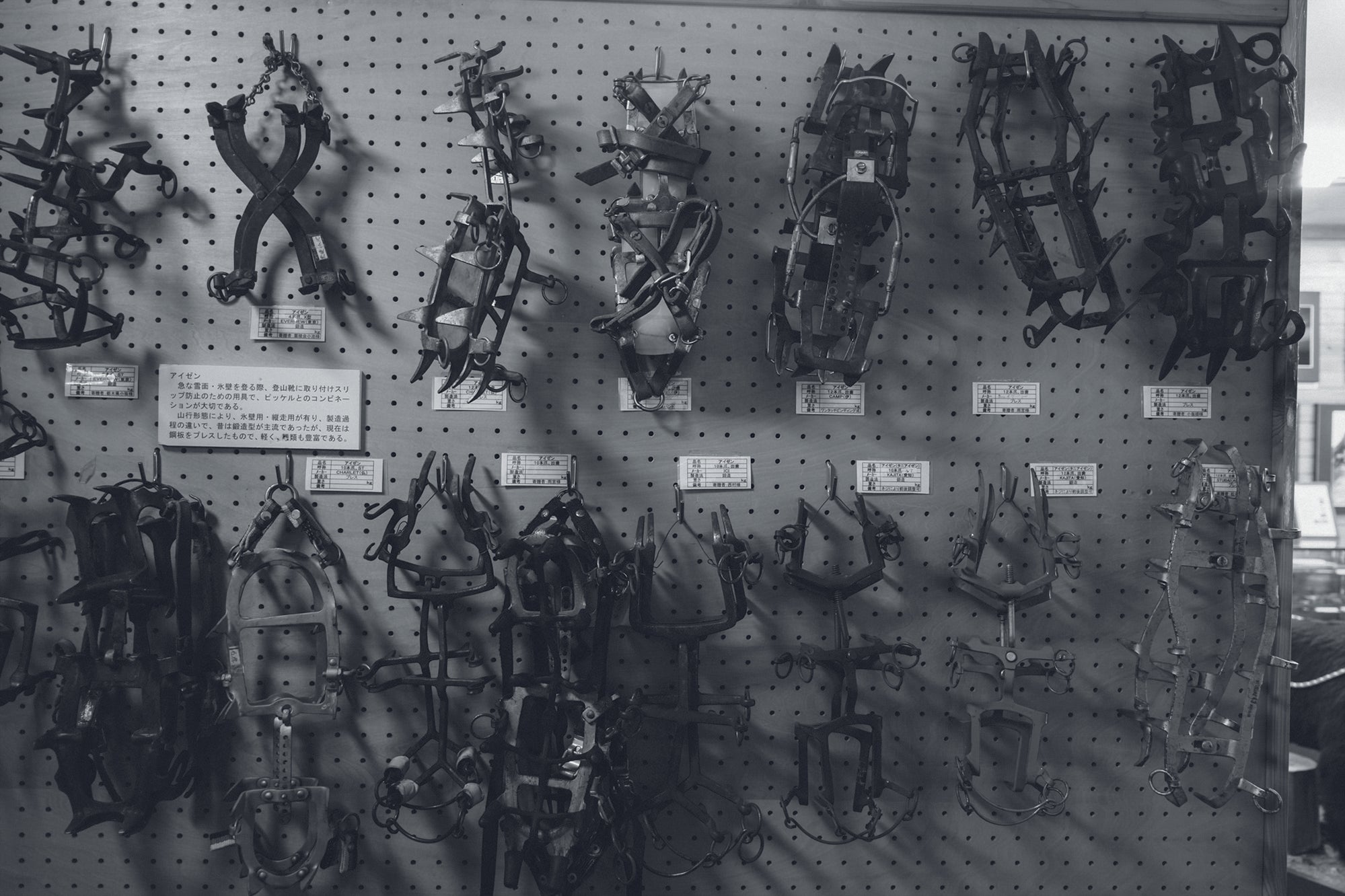In 1956, a group of Japanese climbers became the first to reach the peak of the Himalayas’ Mt. Manaslu (26,759 feet), the eighth highest peak in the world. Their success inspired postwar Japan and set off an unprecedented mountain climbing boom. Soon everyone was dreaming of their own climbs.

As if he had foreseen the boom, a young man in the Tsubame-Sanjo area likewise fell in love with the mountains. Yukio Yamai, who would later found Snow Peak, was still just another young climber. His favorite peak was Mt. Tanigawa, on the border between Niigata and Gunma prefectures. One of the most famous peaks in the country, it was later included in Kyuya Fukuda’s One Hundred Mountains of Japan.
Though it rises less than 6,500 feet, its steep rock faces and drastic weather changes have claimed more victims than any other mountain in the world. No wonder climbers have referred to it as “the devil’s mountain” or “the mountain that eats people.” But young Yukio eagerly climbed the dangerous Ichinokurasawa face of Mt. Tanigawa.

By now, Yukio was out climbing nearly every week, and he kept coming back to the metal workers of the Tsubame-Sanjo area asking, “Would you make this for me?” He wanted more and more items, and his requirements kept getting higher. Finding some gear that he liked, he would go so far as to order it from Europe. He would then lay different gear side by side and compare it with his own eyes. But Yukio was convinced he could make something better. The advanced skill of the Tsubame-Sanjo craftsmen gave solid form to the gear that Yukio envisioned.

Eager to test the workmanship, he waited anxiously to go to the mountains. Climbing boot hobnails, hammers, crampons: Yukio and his friends tested and checked them out in the mountains and kept improving them. Even the slightest change of angle or position could make a life-or-death difference on the snow. Though it took some fumbling to achieve, Yukio’s greatest joy was finding ways to improve upon the existing equipment. In his mountain journal from that time, he wrote:
“Today we tried out a number of pitons. The sound as we drove them in echoed wonderfully! Each metallic ringing sound trailing off lifted our spirits higher and higher.”
Ascending the lower Takizawa area of the Ichinokurasawa face of Mt. Tanigawa, August 16, 1956

Yukio was encouraged enough by the pleasant ringing noises of his pitons in his favorite mountains that he decided to go independent at the age of just 26. In 1958, he founded Yamai Shoten, later renamed Yamako, the predecessor to today’s Snow Peak.
Though he began as an independent wholesaler carrying mainly carpenter’s tools, the original high-quality climbing equipment Yukio had personally worked with and tested gradually started to sell incredibly fast all over Japan.
A particularly big hit that outpaced the competition was Yukio’s crampons. Refined after many rounds of improvements, this masterpiece product became known as the crucible of Snow Peak’s craftsmanship. When those crampons started selling faster than anyone could imagine, Yukio’s craftsmen could not keep up making them by hand. The company went on to build a mass production system using the outstanding forging machine technology of the Tsubame-Sanjo area.

As Yukio built his company and fostered his workforce, he said a quiet goodbye to the mountains. Though still mentally and physically capable of taking on more peaks, he made a decision based on his respect for the power of nature that he had come to know so well and the weight of his destiny as company President.
In 1963, five years after the founding of Yamai Shoten, Yukio registered a new trademark, and the Snow Peak brand was born. Snow Peak: whenever Yukio heard the name, it called to mind the beautiful white silhouette of Mt. Tanigawa, the mountain where he had risked his entire youth.
No matter how many times he climbed it, Yukio could never master it, and each time he stood upon it, the eternal summit seemed to grow more distant. Mt. Tanigawa was the revered teacher that tempered him. Making it his mission to accomplish a level of craftsmanship as rare as that peak, Yukio single-mindedly continued to make and sell the kind of gear he himself wanted.

Stay tuned as we continue to tell the Snow Peak history and tradition and be sure to check out existing 60th Anniversary stories through the celebration of this momentous year in our company's history.


